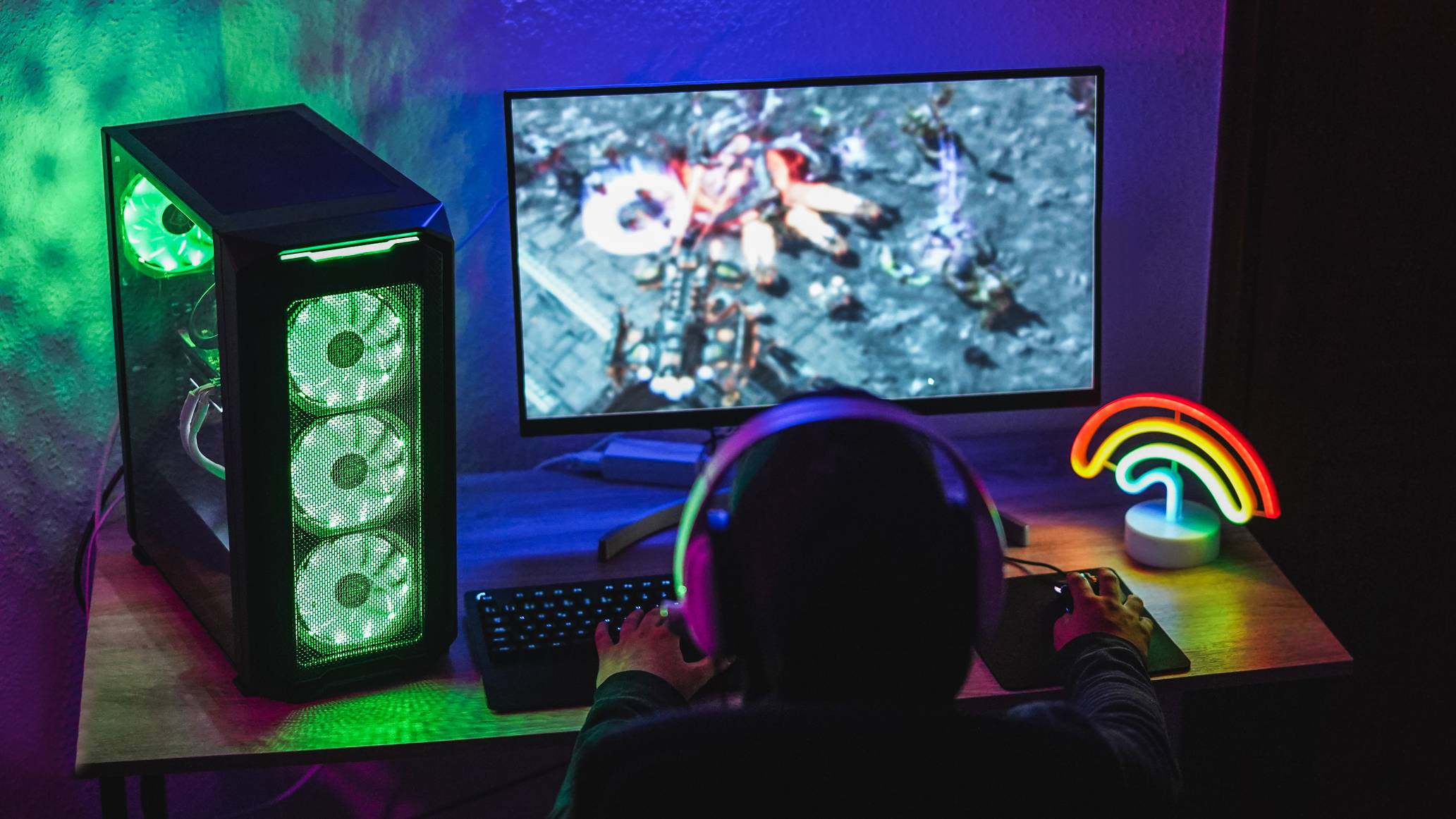We’ve all heard the term “gaming PC”, alternately referred to as the holy grail of the computer world or as bottomless pits in which PC enthusiasts can spend a lot of money…. But what makes a computer a “gaming PC” and how is it different from the computer your company puts on your desk?
There is one major difference that defines the characteristic of a gaming PC: a high-end graphics card (GPU).
That’s it. This is where we draw the line between consumer PC and gaming PC. Games require a level of graphics performance that the average computer simply cannot provide using the graphics processing built into the CPU. Not all integrated GPUs are game grade, but that’s where we draw the line. Without a good graphics card, the computer doesn’t make a difference.
This does not mean that the difference between a normal PC and a gamer PC is limited to the graphics card. The average gaming PC has most, if not all, of the following features:
High speed processor not locked.
Not all gaming systems are overclocked, but the option can be useful. An i7-7700 is a “locked” chip, an i7-7700K can be overclocked with a few quick tweaks in the BIOS, allowing gamers to push the CPU to performance levels above the manufacturer’s specifications.
Intel Core Kabylake i77700K Processor 4.20 GHz
- Product Type: Intel Core i7-7700K Processor 4.20 GHz
- Not compatible with Microsoft operating systems prior to Windows 10
- Fast & responsive
- Multitasking.Graphics Max Dynamic Frequency: 1.15 GHz
- Enhanced security
High-end cooling, often with water (watercooling).

Watercoolling is the state of the art, but there are also high-end air coolers available. High-end CPUs and GPUs generate a lot of heat and keeping these components cool and well ventilated during extended gameplay prevents stuttering, lag and other heat-related performance issues. By using water cooling, we can increase the surface area available to dissipate heat and move that heat away from these components more efficiently. Overclocked components produce even more heat and at some point, to push performance further, water cooling becomes necessary rather than simply optional.
High speed, overclocked, heat sank the RAM.
Your Excel spreadsheet may not care much about how fast things go in and out of RAM as long as it is sufficient. But for a high-speed game, faster RAM with low latency can have a significant impact on frame rates. So it’s also worth having RAM arrays with heatsinks and some level of overclocking.
High-end audio.
This comes in the form of both high-end sound on board and the use of external DAC converters. Gamers love high fidelity sound. On high-end system boards, you start to see the same types of capacitors that true audiophiles use for their own stereo systems, gold-plated contacts on the I/O back panel, and filtered power on a designated USB port for external DACs.
Cable management, jacketed and color-coded cables, and fully modular power supplies.
If you’ve ever opened the hood of a computer and been greeted with a rainbow of cabling, you’ve seen the need for video game enthusiasts to ensure efficient airflow. Effective cable management helps prevent dust build-up in the chassis and improves airflow, which… you guessed it, reduces heat and prevents heat lag. In a gaming computer, you have to think carefully about how to run cables between components.
High performance data storage.
We like to play games. We don’t like waiting to play. Nobody likes long loading times. High-performance storage means hard drives spinning at more than 7200 RPM or using an SSD in the areas of using SSDs and spinning drives in RAID for more performance.
Western Digital SSD internal WD Blue NAND 3D SATA, 1TB
- Sequential read speed up to 545 MB/s and sequential write speed up to 525 MB/s
- Industry-leading mean time between failure (MTTF) of 1.75 million hours and multiple error correction technologies for long-term reliability
- Optimization for multitasking to run resource-intensive applications without slowing down the system
- Available in two sizes, 2.5″/7mm and M.2 2280, to fit most PCs
- WD FIT Lab certification for compatibility with a wide range of notebooks and desktops
Custom lights, windows and displays.
Attention to aesthetics in a gaming computer is also much more important. Proper functioning of the gaming computer is essential, but the aesthetics and look of gaming computers are given special attention.
Note that even gaming computers costing less than 1000 € can enjoy the benefits of a bright look and tuning.
Pay attention to the smallest details.
Rubber seals to isolate the screws from the chassis and prevent vibration noise. Anti-vibration fan mounts to minimize fan noise. High quality static fans for use on radiators. Soundproof foam lined cases. Dust filters at air intakes. There is, quite literally, no detail too small to pay attention to in an enthusiastic game build.
Gaming computers are bottomless pits where you can spend thousands of dollars with ease. At the same time, you can achieve a significant level of quality and performance for modest budgets. The most important part of a gaming computer is that it has enough power to play games at the target resolution and sufficient frame rate. The rest becomes optional.